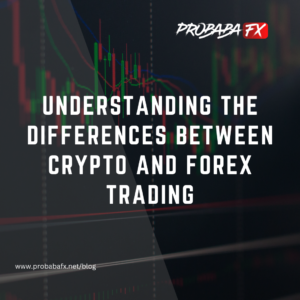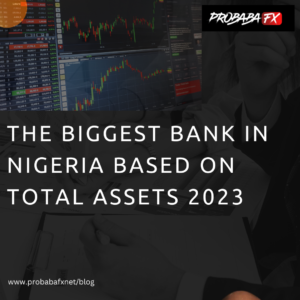The Value Of Risk Management
The world of forex trading offers enormous profit potential, drawing a large number of traders seeking to capitalize on attractive chances. However, it is critical to remember that, despite the exhilaration, there is a domain of uncertainty and danger. The ever-changing tides of currency rates, economic volatility, and geopolitical risks may pose enormous hurdles and expose even the most seasoned traders to severe losses. It is critical to grasp the significance of applying the finest Forex risk management tactics to control risk for better trading.
The necessity of risk management in forex must be considered in the volatile world of forex trading. While there is definite economic potential, the route to success is frequently riddled with inherent dangers and uncertainties. Exchange rates, economic instability, and geopolitical developments can all quickly turn a good transaction into a catastrophic loss.
To effectively traverse the Forex market, it is critical to prioritize risk reduction as a core component of your trading strategy. By stressing capital protection and reducing possible losses, you not only secure your assets but also lay the groundwork for long-term success in the extremely competitive world of currency trading.
Mastering risk management is critical for effective Forex trading since it reduces possible financial losses and protects assets. Forex traders must approach the market cautiously, acknowledging the risks and making the required adjustments. Risk management is estimating the possible impact of future losses and developing rules and procedures to mitigate negative consequences. It is critical to prioritize rigorous preparation and have a risk management strategy in place from the outset.
In Forex, it is critical to have a plan of action in place to address any potential losses caused by execution faults or external variables. For strategic and informed investing, it is critical to consider the risks outweighing the rewards, such as currency exchange rate changes and economic uncertainty. Traders may navigate the Forex market with confidence and boost their chances of long-term success by recognizing these hazards and adopting proactive precautions.
Another example of economic risk is macroeconomic variables like currency rates, policies, and political stability affecting foreign investment decisions. Before funding a project, address economic risks, operational expenses, debt, and forecasting to ensure sustainable revenues and financial stability.
The unstable trade environment is causing problems for global manufacturing. Manufacturers continue to take advantage of foreign trade possibilities, outsource jobs, and purchase supplies from other countries. So, how can they do worldwide business without being harmed by currency volatility?
Here are some of the best risk management techniques for forex traders that can help mitigate forex trade risks.
Educate Yourself: Learn about the Forex market’s processes, fundamental and technical analysis, and risk management measures. Knowledge is a great risk-mitigation tool.
Identify risk exposure: Examine your supplier chain, cash flows, payables, and receivables for foreign exchange vulnerability. Check sales contracts and leases for embedded terms requiring price revisions due to currency rate fluctuations to avoid surprises. Identify exposures, then use sensitivity analysis or value-at-risk models to quantify the potential impact of rate changes effectively. This will help you establish priorities for reducing your exposure.
Use Stop Loss Orders: Use stop loss orders on each trade to automatically quit a position if the market goes against you. This reduces possible losses and safeguards your wealth.
Diversify Your Portfolio: Diversify your portfolio by trading multiple currency pairs, asset, or markets instead of focusing solely on one. Diversification spreads risk and reduces exposure to a single event or currency.
Patience and Discipline: When completing transactions, exercise patience and discipline. Stick to your trading strategy, avoid chasing after rapid profits, and fight the need to depart from your risk management techniques. Long-term success necessitates patience and discipline.
Regularly Review and Adapt: Evaluate and revise your trading performance and risk management tactics regularly. Analyze your trades, look for patterns, and adapt your strategy accordingly. Staying ahead of market dangers requires adaptation.
To summarize, risk management forms the foundation of effective and long-term trading practices, highlighting its critical importance in trading. Traders are susceptible to financial jeopardy without adequate risk management, which can result in huge losses and potentially destroy their trading careers.
Conclusion
Risk management is the process of securing your cash and ensuring that you have the staying ability to traverse the financial markets’ ups and downs. It’s more than a technique; it’s a basic philosophy that safeguards your hard-earned cash. You may reduce possible losses and safeguard your trading cash by using stop-loss orders, diversifying your portfolio, and calculating position sizes wisely.
Furthermore, risk management is not a one-size-fits-all method. Traders must adjust their risk management tactics to their trading styles, risk tolerance, and unique aims. Understanding and executing good risk management is a non-negotiable component of your trading experience, regardless of whether you are a day trader, swing trader, or long-term investor.
Emotional discipline and the capacity to stick to your risk management plan are equally crucial, especially in high-pressure situations. The full benefit of risk management is seen during times of uncertainty and volatility. Sticking to your risk boundaries might help you avoid rash judgments and the often irrational behavior that comes with fear and greed.
Finally, the advantages of risk management go beyond basic capital preservation. It gives you a sense of control and confidence in your trading, allowing you to focus on your tactics and continuous skill growth. It helps traders weather the storms, learn from their mistakes, and eventually mature as informed and effective market participants.
So, when you enter the world of trading, keep in mind that risk management is more than just a buzzword—it’s your most dependable ally. Accept it, develop it, and include it in your trading practice. Effective risk management not only protects your cash but also moves you closer to attaining your financial goals and trading success.








































































































































